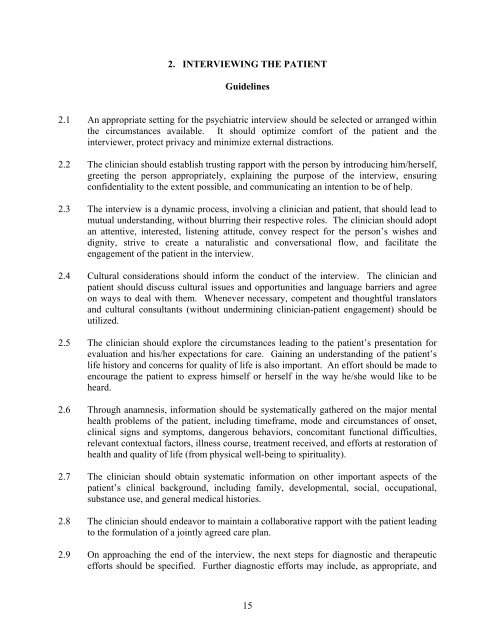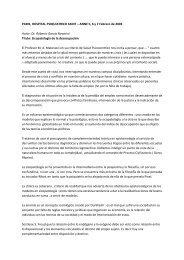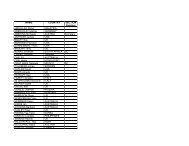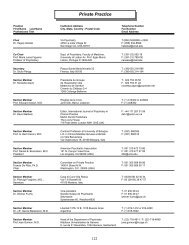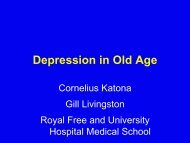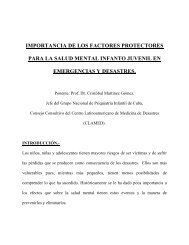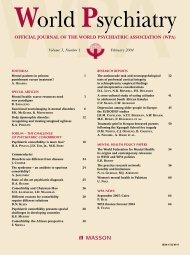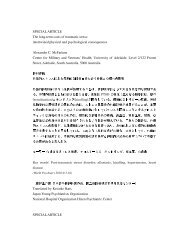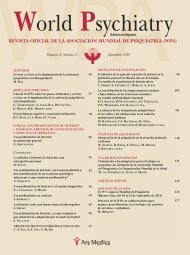Chapters 1-4 - World Psychiatric Association
Chapters 1-4 - World Psychiatric Association
Chapters 1-4 - World Psychiatric Association
Create successful ePaper yourself
Turn your PDF publications into a flip-book with our unique Google optimized e-Paper software.
2. INTERVIEWING THE PATIENTGuidelines2.1 An appropriate setting for the psychiatric interview should be selected or arranged withinthe circumstances available. It should optimize comfort of the patient and theinterviewer, protect privacy and minimize external distractions.2.2 The clinician should establish trusting rapport with the person by introducing him/herself,greeting the person appropriately, explaining the purpose of the interview, ensuringconfidentiality to the extent possible, and communicating an intention to be of help.2.3 The interview is a dynamic process, involving a clinician and patient, that should lead tomutual understanding, without blurring their respective roles. The clinician should adoptan attentive, interested, listening attitude, convey respect for the person’s wishes anddignity, strive to create a naturalistic and conversational flow, and facilitate theengagement of the patient in the interview.2.4 Cultural considerations should inform the conduct of the interview. The clinician andpatient should discuss cultural issues and opportunities and language barriers and agreeon ways to deal with them. Whenever necessary, competent and thoughtful translatorsand cultural consultants (without undermining clinician-patient engagement) should beutilized.2.5 The clinician should explore the circumstances leading to the patient’s presentation forevaluation and his/her expectations for care. Gaining an understanding of the patient’slife history and concerns for quality of life is also important. An effort should be made toencourage the patient to express himself or herself in the way he/she would like to beheard.2.6 Through anamnesis, information should be systematically gathered on the major mentalhealth problems of the patient, including timeframe, mode and circumstances of onset,clinical signs and symptoms, dangerous behaviors, concomitant functional difficulties,relevant contextual factors, illness course, treatment received, and efforts at restoration ofhealth and quality of life (from physical well-being to spirituality).2.7 The clinician should obtain systematic information on other important aspects of thepatient’s clinical background, including family, developmental, social, occupational,substance use, and general medical histories.2.8 The clinician should endeavor to maintain a collaborative rapport with the patient leadingto the formulation of a jointly agreed care plan.2.9 On approaching the end of the interview, the next steps for diagnostic and therapeuticefforts should be specified. Further diagnostic efforts may include, as appropriate, and15


